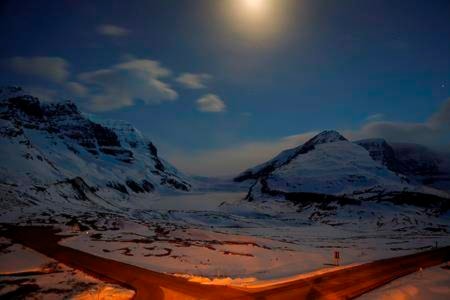Parks Canada says it won’t go ahead with a plan to build a bike trail along the scenic highway that connects Banff and Jasper national parks.
The federal agency had budgeted about $66 million to build a 107-kilometre route, along with parking lots, campsites and washrooms.
“Parks Canada is committed to the ecological integrity of its parks and historical sites,” the agency said in a news release Wednesday. “Preliminary feedback from the consultation process expressed concerns over the potential environmental impact and high cost associated with the project.”
It said that the money will be spent elsewhere in the national parks system.
The Icefields Parkway is considered a classic cycling tour, but riders are restricted to its narrow shoulder.
Parks Canada had proposed a separate, paved route buffered from the busy road by 10 to 20 metres of trees.
Environmental groups had voiced serious concerns about the project. They said it would cut through critical habitat for caribou, grizzly bears and migratory birds.
Kecia Kerr, executive director of the Canadian Parks and Wilderness Society for northern Alberta, applauded Parks Canada’s decision to cancel the project.
“The price tag on the trail was really high,” she said. “It was going to be going through some pretty important grizzly bear habitat.”
Kerr said the bike trail was often compared to one in the Bow Valley through Banff National Park.
“It’s really not the same,” she said. “In that area, there is a fence along the highway and so the trail is inside that fence. In this case, there was not going to be a fenced-off trail along the highway.
“It was going to increase the likelihood that people would be winding up face-to-face with grizzly bears … trying to be feeding.”
Parks officials had acknowledged in a background document that the trail would have safety risks and induce further development.
It showed pullouts and rest stops would need to be built every five to 10 kilometres. The trail would have had to be connected by pavement to campgrounds and other infrastructure.
It would have wound through critical habitat for bats, olive-sided flycatchers and two endangered species — the mountain caribou and the whitebark pine.
Officials acknowledged in the document that the trail could create encounters between grizzly bears and cyclists, who are less likely to carry bear spray and who travel quietly at much higher speeds than hikers.
“Some mitigation measures could have relatively significant costs which should be factored into decision-making,” the document said.
